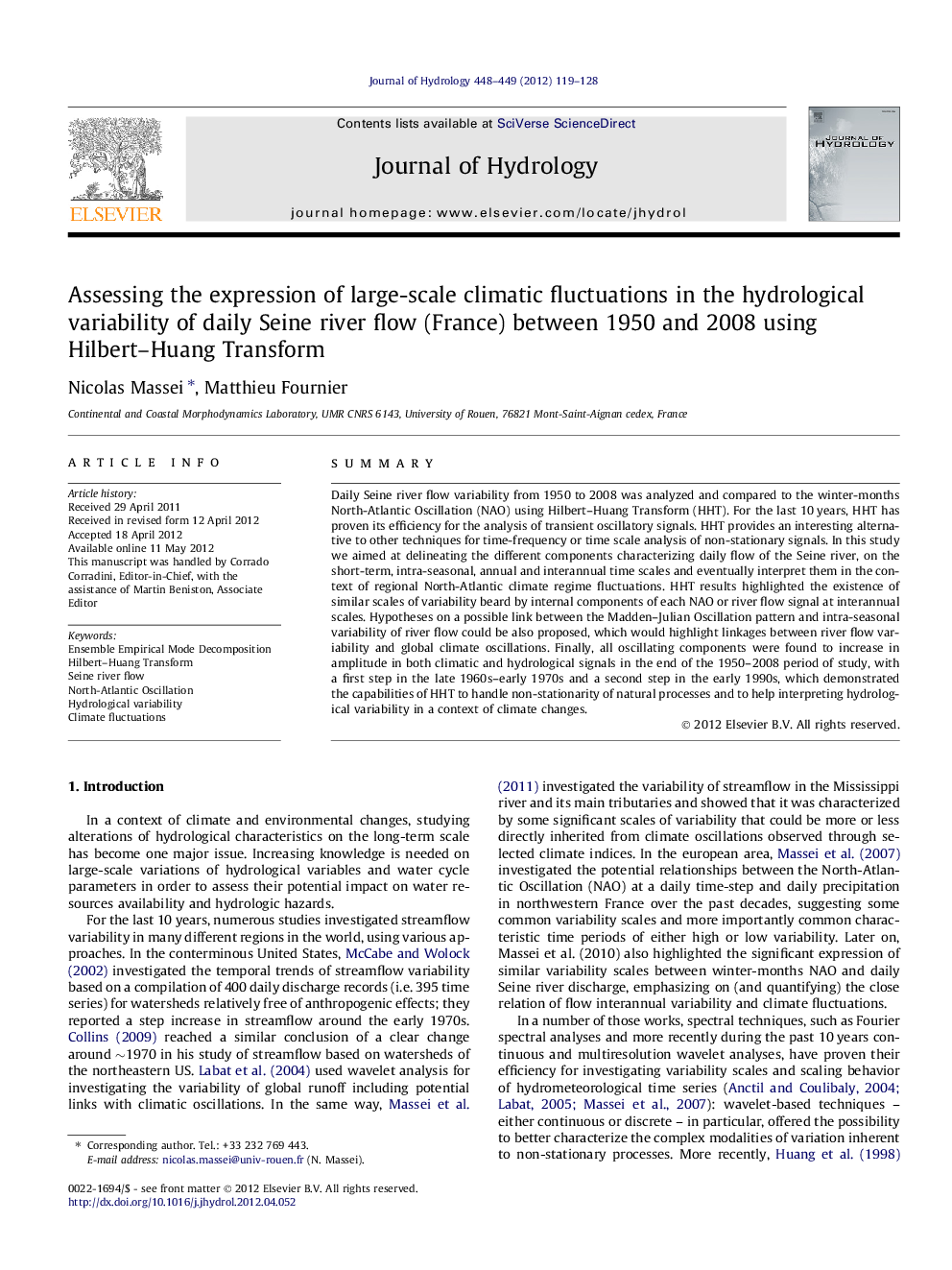| Article ID | Journal | Published Year | Pages | File Type |
|---|---|---|---|---|
| 4576958 | Journal of Hydrology | 2012 | 10 Pages |
SummaryDaily Seine river flow variability from 1950 to 2008 was analyzed and compared to the winter-months North-Atlantic Oscillation (NAO) using Hilbert–Huang Transform (HHT). For the last 10 years, HHT has proven its efficiency for the analysis of transient oscillatory signals. HHT provides an interesting alternative to other techniques for time-frequency or time scale analysis of non-stationary signals. In this study we aimed at delineating the different components characterizing daily flow of the Seine river, on the short-term, intra-seasonal, annual and interannual time scales and eventually interpret them in the context of regional North-Atlantic climate regime fluctuations. HHT results highlighted the existence of similar scales of variability beard by internal components of each NAO or river flow signal at interannual scales. Hypotheses on a possible link between the Madden–Julian Oscillation pattern and intra-seasonal variability of river flow could be also proposed, which would highlight linkages between river flow variability and global climate oscillations. Finally, all oscillating components were found to increase in amplitude in both climatic and hydrological signals in the end of the 1950–2008 period of study, with a first step in the late 1960s–early 1970s and a second step in the early 1990s, which demonstrated the capabilities of HHT to handle non-stationarity of natural processes and to help interpreting hydrological variability in a context of climate changes.
► We analyzed hydrological variability of Seine river flow from 1950 to 2008 by Hilbert–Huang Transform. ► Interannual and intra-seasonal patterns of NAO/MJO types was highlighted in flow. ► Increased amplitudes characterized flow and NAO variability after 1970 and 1990.
